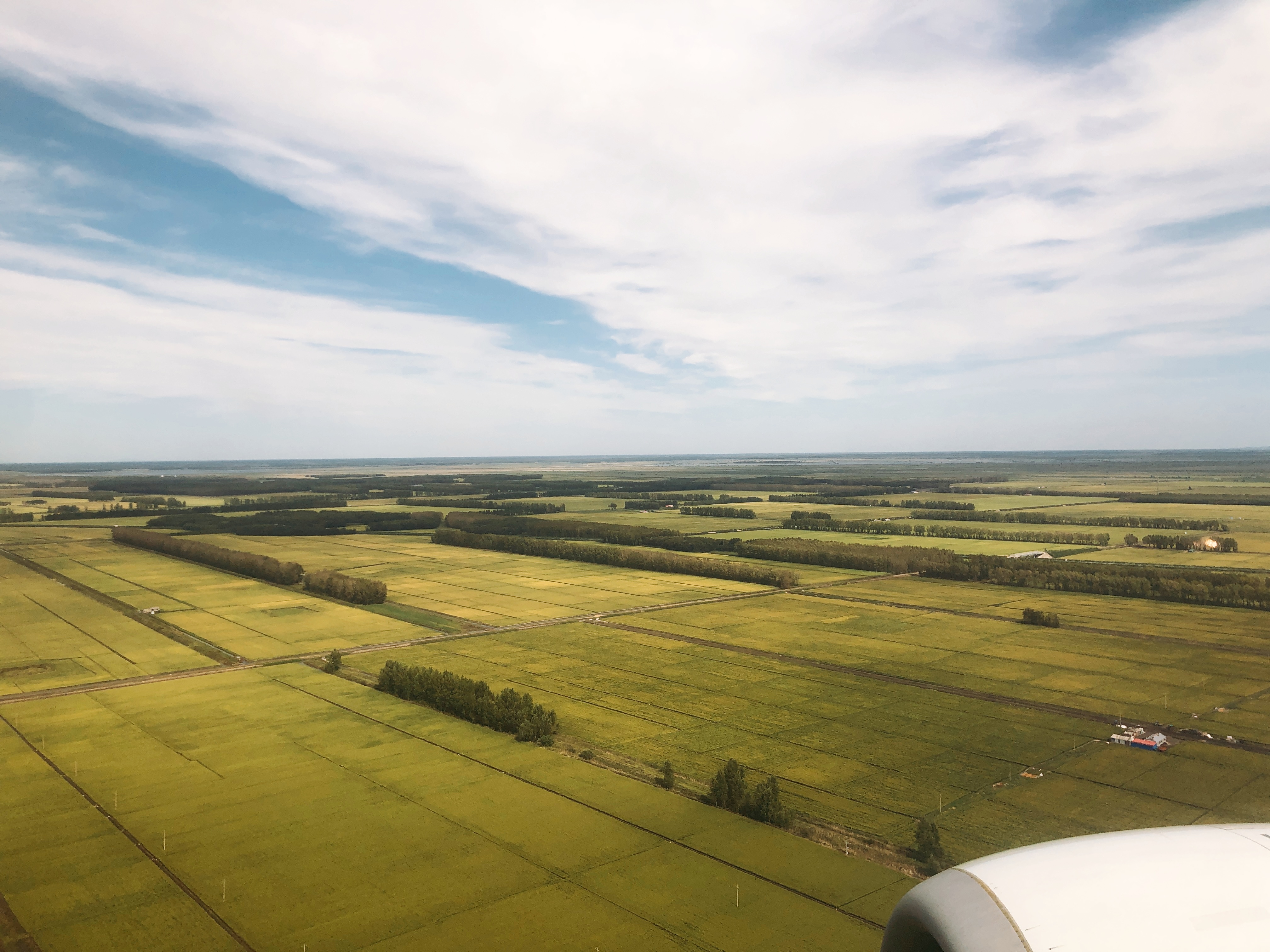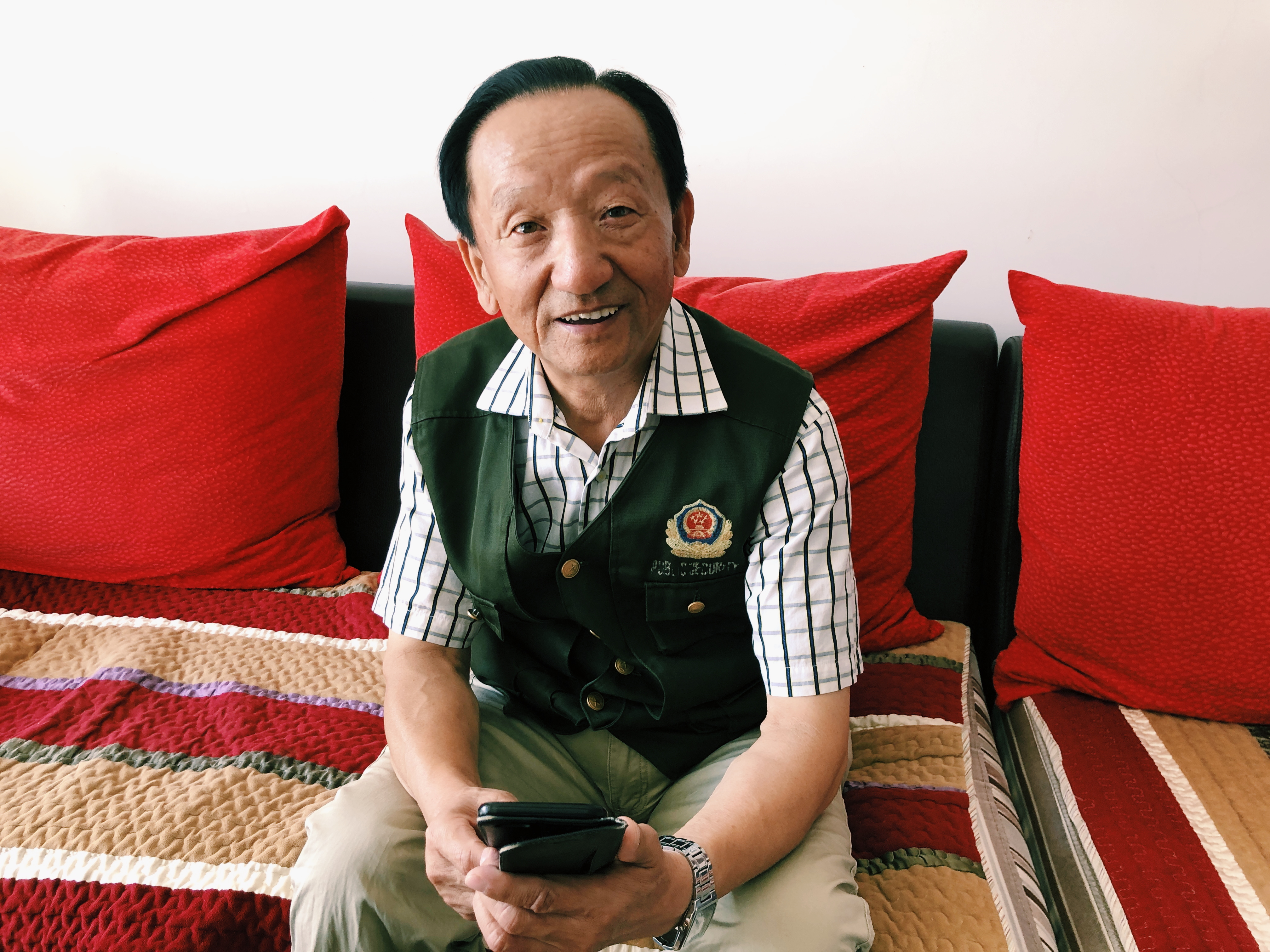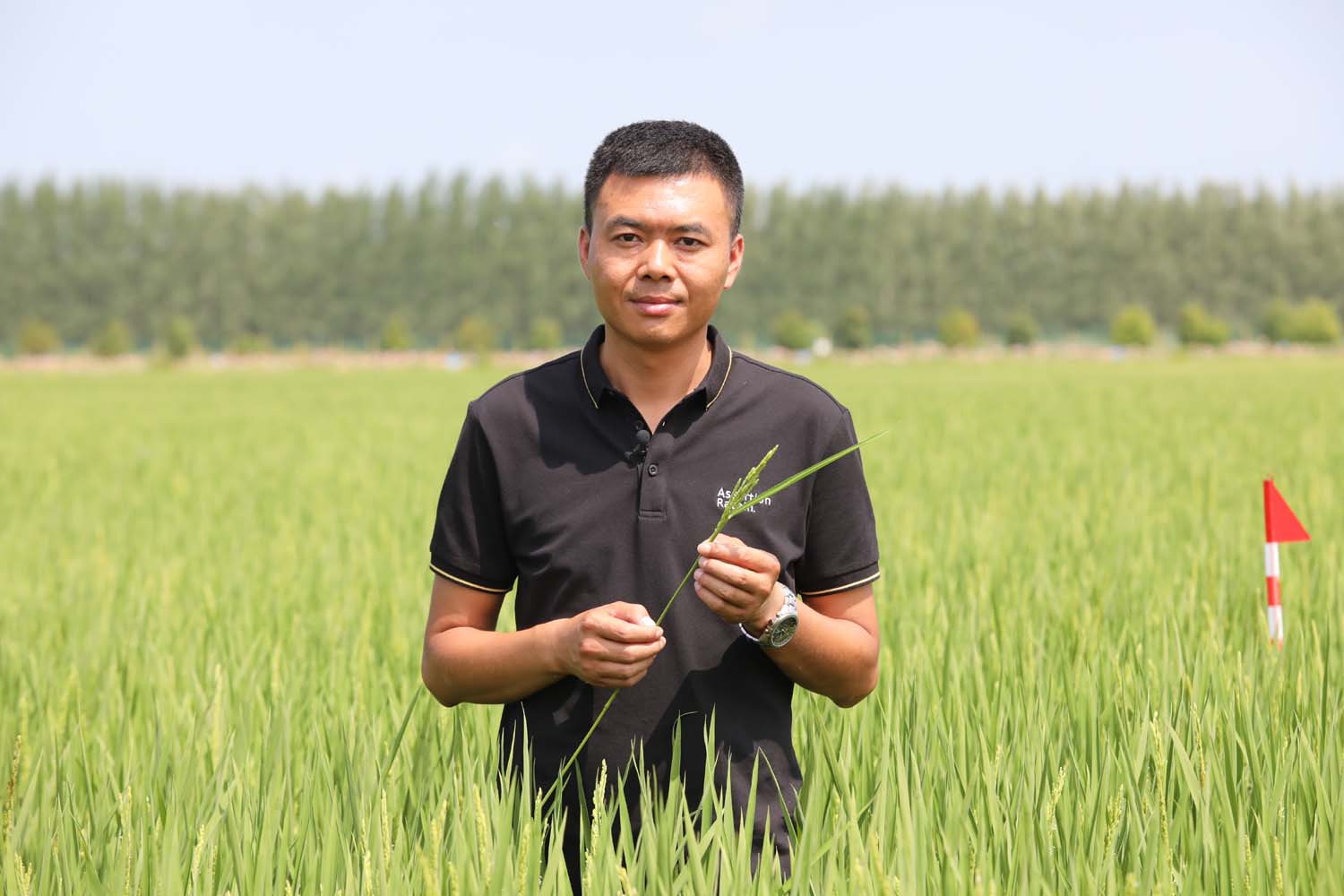

To feed 20 percent of the world’s population with only seven percent of the world’s arable land is certainly a challenge. But that’s what China has been working on for the last 70 years. With a population of 1.4 billion, China faces a tremendous task: how to feed so many mouths?
According to the white paper “Food Security in China” from the State Council Information Office, back in 1949 when the People’s Republic of China was founded, the country’s overall grain output was 116 million tons. That number rose five times to nearly 660 million tons in 2018 – that’s a quarter of global crop yields. Today, China can supply 95 percent of its domestic grain needs.
How did the transformation happen and how has the world’s most populous country managed to feed its people? We explored a remote place called Qixing Farm in northeast China’s Heilongjiang Province to find the answer.

An aerial view of Qixing Farm [Photo: China Plus/Li Yi]
Li Huaicun is the former chair of the labor union of Qixing Farm. Apart from some wrinkles on his face, you wouldn’t be able to tell that he is 77 years old. He looks more energetic, positive and determined than most people of his age, and more importantly, during the past half century, he has witnessed and been a part of the tremendous transformation of a magic land.
“Today’s Qixing Farm is so amazing that it has the only Internet of Things system in China. Two hundred monitoring sites are distributed across 1.05 million mu of paddy fields. Remote sensing satellite data are sent to the control platform for the farm. We can monitor the growing conditions of the rice, whether it needs irrigation and whether there are pests… All of this can be monitored in the control room.”
You might not believe this is a description of a farm in China, which many used to think of as poor and shabby with outdated planting modes. Li Huaicun says even he can’t believe it.
Today, Heilongjiang Province produces more grain than anywhere else in China, earning it the name "granary of China”. Qixing Farm is known as its “ballast stone”. Located in the heartland of the fertile Jiansanjiang plain, the farm, which is around 81,000 hectares, has an annual rice output that can feed a medium-sized Chinese city, or three million people. But what really makes Qixing Farm special is it owns all the latest machinery and technology that have powered the development of China’s agriculture sector.
Photo shows a paddy field at Qixing Farm. [Photo: China Plus/Li Yi]
This, however, wasn’t always the case. Before becoming “the granary of China”, the region was known as “the Great Northern Wilderness.”
Li Huaicun came to Qixing Farm in 1966 as one of 1,600 soldiers who answered the call of the Chinese central government to relocate and farm the then wasteland into arable land. When Li Huaicun and his mates arrived, there wasn’t really a farm. All they saw was muddy fields with weeds. They had to start from scratch.
“The first step is always the hardest. As there were no roads, it was extremely difficult to transport production materials. We had to wait until winter, when the ground froze, so that we could drive trailers on the ice. Once the ground melted, you couldn’t even pass over it by boat. The other thing was the lack of machines. There was only one tractor so it had to work 24 hours a day,” said Li Huaicun.
The process of reclaiming “the Great Northern Wilderness” was difficult, but Li Huaicun knew better than anyone how devastating a lack of food was, so how important a task it was. He had been born into a poor family in Yuncheng County of Shandong Province. When he was small, he saw too many people starve to death in his village.
Li Huaicun is the former chair of the labor union at Qixing Farm. [Photo: China Plus/Li Yi]
Past experience in his childhood made Li Huaicun feel that Qixing Farm was good enough for him as it offered food made from wheat, which was a pretty rare thing. At that time in China, the only thing people expected of food was that they could get enough to eat.
In 1985, Qixing Farm joined the national wave of rural reforms by encouraging farming households to become private contractors of their farmland. The systematic reform motivated farmers to devote more to farming thus increase its effectiveness. But still, a key issue remained to be solved at that time: harvests were not stable.
Northeastern China is one of the world’s three major fertile black soil regions, making it an ideal place for farming. But Qixing Farm was not really at its best. Li Huaicun remembers only soybeans and wheat were grown on the land, neither of which had a high yield.
In the 1980s, the farm decided to grow rice to solve the problem. This major breakthrough unlocked Qixing Farm’s magic path to becoming the “ballast stone” of the “granary of China.”
Photo shows a paddy field at Qixing Farm. [Photo: China Plus/Li Yi]
But the lack of machines was still a drag on production. Most of the hardest work still had to be done by farmers themselves.
The story of laborious farming when machines were scare is not a strange one to Liu Jianguo, a worker at the Great Northern Wilderness Agricultural Machine Center. Like Li Huaicun, his parents were among thousands of people who came to reclaim Qixing Farm. “Conditions in my parents’ time were hostile. At the time, marshlands that machines could not work on had to be plowed by hand,” said Liu Jianguo.
But things changed.
An agricultural machine displayed at the Great Northern Wilderness Agricultural Machine Center, Qixing Farm [Photo: China Plus/Li Yi]
An early adopter of modern machinery
Liu Jianguo says Heilongjiang Province was one of the earliest adopters of agricultural machinery in China. Now, machines including rice transplanters, harvesters, helicopters, and drones have moved into 98 percent of Qixing Farm’s 1.2 million mu, about 81,000 hectares of farmlands.
Of all the machines that are being used on Qixing Farm, a special rice transplanting machine is one of the biggest contributors of the farm’s high yields. Unlike a traditional one, it can fertilize deep in the soil just as it transplants rice seedlings. The two-in-one approach has helped to increase rice yields by five percent and reduce eight percent of chemical fertilizer use.
There are now about 1,600 fertilization transplanting machines being used on Qixing Farm, covering more than half of the farm’s paddy fields. A notable figure this year is a considerable proportion of homemade machines.
“In the past, all transplanting machines were made in Japan. This year, we’ve updated 488 transplanting machines, with more than a third being homemade. This has never happened before. Homemade machines are cheaper and also of good quality,” said Liu Shulin, who is in charge of agricultural machines of Qixing Farm.
Photo shows rows of fertilization transplanting machines used at Qixing Farm. [Photo: China Plus/Li Yi]
Promoting new machines across farming households who are used to traditional planting modes was a major challenge. In 2004, China started to offer subsidies to encourage farmers to buy agricultural machines. Meantime, Qixing Farm launched regular training courses so that local farmers could learn about advanced machines and planting skills.
Jiang Hao, deputy-director of the rice department of Qixing Farm, says farmers like to follow in the steps of “leading farmers”, those who have good farming skills and are open-minded.
“There are always new things”
Qin Yuqiu is one of the leading farmers. Unlike most farmers who tend to hesitate with new machines and technologies, 50-year-old Qin Yuqiu has always been keen on learning new things.
And he’s definitely an early bird.
It is early September, the busiest time of the year. When we meet Qin Yuqiu, he is busy churning soil in the greenhouse to prepare for next year’s farming. He tells us “the earlier the better” has always been his golden rule.
It seems Qin Yuqiu is always one step ahead of the others.
He was born and brought up on Qixing Farm. Following his mom’s suggestion, he majored in animal husbandry at a local vocational high school. After graduating from the school, Qin Yuqiu felt he was more interested in machinery than raising livestock. Later, he got a job driving agricultural machines for other farmers. He was only 20.
Years later, while most of his peers and farmers were weighing and balancing whether to spend money on machines, Qin Yuqiu had already turned his hand to making money out of machines.
In 1994, he bought his first agricultural machine and started to rent it to farming households who didn’t have one. It only took him one year to earn the money he’d spent on the machine.
Qin Yuqiu is a leading farmer at Qixing Farm. [Photo: China Plus/Li Yi]
Qin Yuqiu tells us that now, every household on Qixing Farm owns a whole set of agricultural machines. He believes paying for machines is investing in his land. In the past, he had to hire three or four laborers to help him in busy seasons. A laborer can cost 500 yuan a day. But now, he and his wife can handle almost all the farm work even during the busiest time.
Qin Yuqiu started to plant rice in 2005 and quickly became a specialist. He attributes his successful farming to being a local as he knows more about the land. But what’s more important is his diligence and his open mind.
“There are always new things and new varieties, such as a new fertilization mode. I’m also learning to save costs and increase efficiency. You can’t stick to the old mindset. You can save costs once you combine experience with technology,” said Qin.
Qin Yuqiu tells us he’s been using a very helpful new app that Qixing Farm has launched. The app offers standard planting processes, reference prices of various materials and expert consultations. He says with this app and modern machinery, he has managed to reduce the costs of his paddy fields down to 1,000 yuan per mu.
The app is part of Qixing Farm’s latest innovative achievement – an agricultural Internet of Things system. Researchers had spent six years to develop the system before launching it in 2017. It’s China’s first Internet of Things system in agriculture. The system helps Qixing Farm design customized production measures by monitoring every piece of farmland and collecting relevant data sent by remote sensing satellite.
“We installed 20 automatic meteorological stations to collect environmental data such as air temperature and humidity, rainfall, light and the amount of carbon dioxide. We have 20 detectors to conduct real-time monitoring of underground water. Meantime, there are 200 sites across the farmland to collect soil data,” explained Meng Qingshan, director of the Internet of Things system of Qixing Farm.
The agricultural Internet of Things system helps Qixing Farm design customized production measures by monitoring every piece of farmland and collecting relevant data. [Photo: China Plus/Li Yi]
The “CPU” of Qixing Farm
The rice output of Qixing Farm has been the highest in Heilongjiang Province for seven consecutive years. Now, the farm has changed its goal from feeding Chinese people to feeding them well, which is also a national strategy. To achieve that goal, technology is the core element.
The Jiansanjiang National Agricultural Science and Technology Park is a little like the CPU of the land. All the Qixing Farm’s innovative planting skills, theories and products are developed and researched here.
Li Xiaohui, director of the Jiansanjiang National Agricultural Science and Technology Park, says they walk the “last mile” in agricultural scientific research.
“The science park conducts the most basic scientific experiments and research and solves problems in practice to help build modern agriculture. We are different from universities and research institutions, which focus on sophisticated and advanced technologies. What they develop might be impractical for us. So we solve problems in practical production for farmers. We walk the “last mile” in agricultural scientific research.”
In the meantime, the science park is working to make sure scientifically-sound practices are effectively communicated to farmers.
Photo shows a paddy field at Qixing Farm. [Photo: China Plus/Li Yi]
Beyond pursuing high yields, Qixing Farm is working on developing new rice varieties with higher quality and better taste. Li Xiaohui tells us it might take ten or even twenty years to develop a new variety successfully. “If you go too fast, there will be problems,” said Li Xiaohui.
That’s also how 37-year-old Li Xiaohui climbed to his current position, step by step. He started his career as a researcher on Qixing Farm after graduating from the Northeast Agricultural University in 2004, the same year China launched a national strategy to increase crop yields through technological innovation. Later, he went on to pursue his studies and chose to come back to the farm with a master’s degree in 2008.
Young people are reluctant to work on farms. To attract more talent, Qixing Farm offers young people like Li Xiaohui high salaries and promising promotion opportunities. And this is also behind why Qixing has become one of the best farms in China.
The farm now has a research team with an average age of 30. With young talents and an encouraging scientific research environment, the farm has made a radical change over the past six decades.
“In terms of rice planting, the Jiansanjiang Plain has made a transformation from traditional agriculture to modern and digital agriculture. And Qixing Farm is the spearhead of digital agriculture. Why have we developed so fast? The answer is that we understood and applied technology well,” said Li Xiaohui. 
Li Xiaohui is the director of the Jiansanjiang National Agricultural Science and Technology Park. [Photo courtesy of Li Xiaohui]
Last September, Chinese President Xi Jinping inspected Qixing and encouraged the farmers to speed up the development of green agriculture, saying "China should always have control over its own food supply."
Li Xiaohui, who was there shaking hands with Xi Jinping as a staff representative, says he has been motivated by the words of the President. He says his team has been working on more than 50 scientific projects this year.
Qixing Farm is now working to guarantee sustainable development by promoting organic fertilizer, and protect the fertility of the black soil. It also has plans to divert river water to irrigate rice and protect underground water.
Meantime, the Jiansanjiang Plain, where the Qixing Farm is located, is currently China’s research base for experiments on grain production technology. It’s one of the 30 sites scattered across China which researches different agricultural technologies in accordance with local geographical and agricultural conditions.
Photo shows a paddy field at Qixing Farm. [Photo: China Plus/Li Yi]
To allow more people to see what China’s modern farming is like, Qixing Farm is developing a series of agriculture-themed tours. Yuan Li, director of the Tourism Bureau of Qixing Farm, says that every year, those who came to build the farm decades ago come back to visit and are always amazed.
Among these people, 77-year-old Li Huaicun chose to stay. He sees the land as his hometown and hopes his offspring also live there. “I never dreamed I would see this: high buildings are everywhere, farmers have moved into apartments and live a city life. I think life here is better than that in Beijing. I will never leave the place. I live here, work here and my offspring will also stay here,” said he.
A street view of Qixing Farm [Photo: China Plus/Li Yi]
After Li retired, he enjoys writing songs to express his love for the land and to recall his youth devoted to the Great Northern Wilderness. In one of his songs, the lyric goes like this: we have been transforming the wilderness into granary, building bridges and roads, we’re still on our way, and we’re still young.
